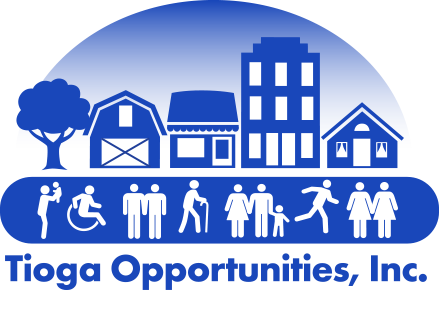One in every fifteen homes in the U.S. has high Radon levels. Is your home one of them?
January is National Radon Action Month and Tioga Opportunities, Inc. is encouraging you to protect your home and family from the dangers of Radon. You may already know that smoking is the number one cause of lung cancer in the United States. But do you know what’s number two? The answer is radon, an invisible, radioactive gas—and if you didn’t know, you’re not alone.
“Radon is a serious public health problem and a lot of people don’t know about it,” says Robert Whitcomb, PhD, at the Centers for Disease Control and Prevention in Atlanta, Georgia. He says it’s estimated to cause over 20,000 lung cancer deaths each year in the U.S, and that 1 out of 15 homes have dangerously high radon levels.But many of the people living in those homes don’t have any idea, Whitcomb says. That’s not surprising, because unlike tobacco smoke, radon isn’t something you can see. You can’t smell or taste it either.
Radon gas forms naturally in the ground. Most radon mixes harmlessly with outdoor air, and we all breathe in low levels everyday, Whitcomb says. The problem is when radon from underground seeps into a home through cracks and gaps in the foundation and gets trapped inside. Breathing indoor air with high radon levels can — over time — damage the lungs and lead to cancer.
Meghan Porter, of Elma, Washington, decided to test her home almost by chance. She learned about radon at her new job — with the Washington Tracking Network (WTN) — and decided to pick up a testing kit.“Until then, I’d never even heard of radon,” she says.She was surprised by the results. Radon levels were dangerously high in her basement — specifically in her 9 year-old daughter’s bedroom.“If I didn’t have that job, it never would have crossed my mind to test,” she says. “I had no idea that radon was something that could be in my home.”
Radon can really be a problem anywhere, Whitcomb says. It can be a risk in small homes and big homes, old homes and new homes. “You can even have two almost identical houses right next to one another,” says Whitcomb. “One will have low radon levels while the other is very high. That’s why everyone needs to test.”
For more information about National Radon Action Month, visit: https://www.epa.gov/radon/national-radon-action-month-consumer-information
For resources and solutions to protect your family and home from the dangers of radon, call us at 607-687-0944 today and visit us online at https://tiogaopp.org/radon-testing-mitigation/.
Source: U.S. Environmental Protection Agency

